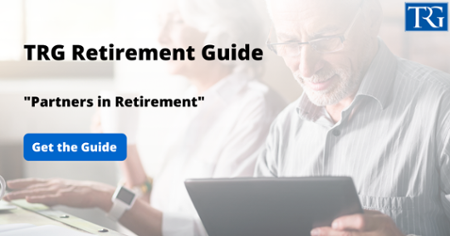It is essential that our Fortune 500 clients understand that there is a direct correlation between investment risk and return. In general, as the return potential rises, so does the level of risk. Alternatively, the lesser the risk of an investment, the lower its potential return. Investing in a bank CD, for instance, may be low-risk, but it also offers a lower return potential than purchasing common stock.
| "The less risk an investment has, the lower the potential for return." |
 |
This applies to both investment portfolios and individual investments. The more aggressive an investor is, the more risk he or she may be willing to assume; more risk means a higher potential return, but also a higher possibility of loss. Conversely, we would also like to point out to our Fortune 500 clients that the more conservative an investor is, the less risk they are generally comfortable with. Less risk entails lower potential returns, but also a lower probability of loss. This is referred to as the risk-reward tradeoff.

However much we would like it, we cannot have everything. There is a relationship between growth, income, and the stability of our investments, and as we move closer to one, we move away from the others. This is a dilemma faced by all investors. Fortune 500 personnel should strive to maximize returns at a level of risk that is acceptable to them.
Fortune 500 employees seeking a balanced approach to investing should consider the concept of asset allocation. A study conducted by Brinson, Hood, and Beebower in 1986, often referred to as the "BHB study," found that asset allocation is the primary determinant of long-term portfolio performance. The study showed that approximately 91.5% of portfolio returns were attributed to asset allocation decisions, while individual security selection and market timing had a lesser impact. This research emphasizes the importance of carefully diversifying investments across different asset classes, such as stocks, bonds, and cash, based on individual risk tolerance and investment goals. By allocating assets effectively, Fortune 500 employees can aim to achieve a balance between risk and reward, optimizing their investment outcomes. (Source: Brinson, Gary P., L. Randolph Hood, and Gilbert L. Beebower. "Determinants of Portfolio Performance." Financial Analysts Journal, 1986)
Imagine yourself as a seasoned traveler embarking on a thrilling expedition to explore new territories and discover hidden treasures. Just as your journey presents opportunities for adventure, the world of investments offers a similar dynamic. In this investment expedition, risk and reward are like two sides of a compass, guiding your path. As you venture into uncharted territories, you encounter different landscapes, each with its own allure and associated risks. The higher the peak you aim to conquer, the steeper the cliffs you may face. Similarly, the greater the potential reward you seek, the higher the level of risk you must be willing to embrace. Just as a skilled explorer assesses the terrain and prepares for the challenges ahead, successful investors carefully assess their risk tolerance, diversify their portfolio, and choose investment strategies that align with their goals. So, embrace the spirit of adventure as you navigate the investment landscape, finding the right balance between risk and reward, and journey towards the financial rewards that await you in your retirement expedition.
This information should not be construed as investment advice. Neither the named Representatives nor Broker/Dealer gives tax or legal advice. All information is believed to be from reliable sources; however, we make no representation as to its completeness or accuracy. The publisher is not engaged in rendering legal, accounting or other professional services. If other expert assistance is needed, the reader is advised to engage the services of a competent professional. Please consult your Financial Advisor for further information or call 800-900-5867.
The Retirement Group is not affiliated with nor endorsed by fidelity.com, netbenefits.fidelity.com, hewitt.com, resources.hewitt.com, access.att.com, ING Retirement, Alcatel-Lucent, AT&T, Apache Corporation, Altria, Avaya, Baker Hughes, Bayer, Boeing, BP, Bristol Myers Squibb, Chevron, Concho Resources, Hughes, fidelity.com, Wyeth, Northrop Grumman, Merck, Raytheon, Coca-Cola ,Qwest, Pfizer, Caterpillar, ConocoPhillips, ExxonMobil, Sempra Energy, San Diego Gas & Electric Company, Southern California Gas Company, Ameren, Anheuser-Busch, APL, Bank of America, Blackhawk Networks, Caterpillar, CenturyLink, Chevron, Citigroup, Clorox, Coca-Cola, Colgate, Con Edison, ConocoPhillips, Dexone, ExxonMobil, GlaxoSmithKline, Halliburton, Hewlett Packard Home Depot, Honeywell, HP, IBD, Johnson Controls Kaiser Permanente, Kimberly-Clark, Kinder Morgan, Lockheed Martin, McCormick Spice, Merck, Monsanto, Northrop Grumman, Occidental Petroleum, Pepsi, Pfizer, PG&E, Phillips 66, Phillip Morris, Qwest, Raytheon, Royal Dutch Shell, Safeway, San Diego Gas & Electric, Schlumberger, Scotts Miracle Gro, Sempra, Siemens, SoCal Edison, Sony, Southern California Edison, Teradata, Toyota Motor Corporation, Tropicana, United Parcel Service, Verizon, We Energies Group, Wisconsin Energy, Wyeth, Verizon or by your employer. We are an independent financial advisory group that focuses on transition planning and lump sum distribution. Please call our office at 800-900-5867 if you have additional questions or need help in the retirement planning process.
The Retirement Group is a Registered Investment Advisor not affiliated with FSC Securities and may be reached at www.theretirementgroup.com.
